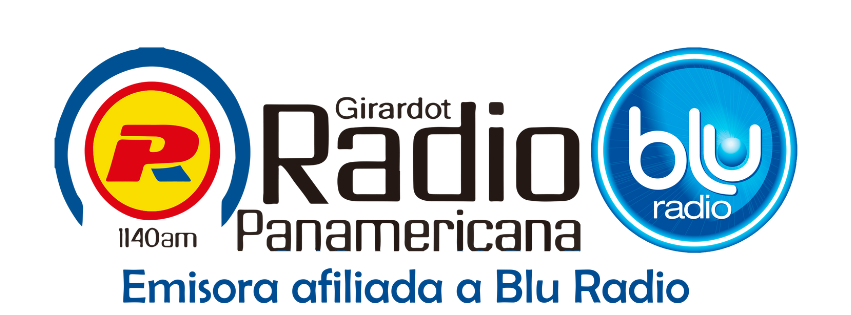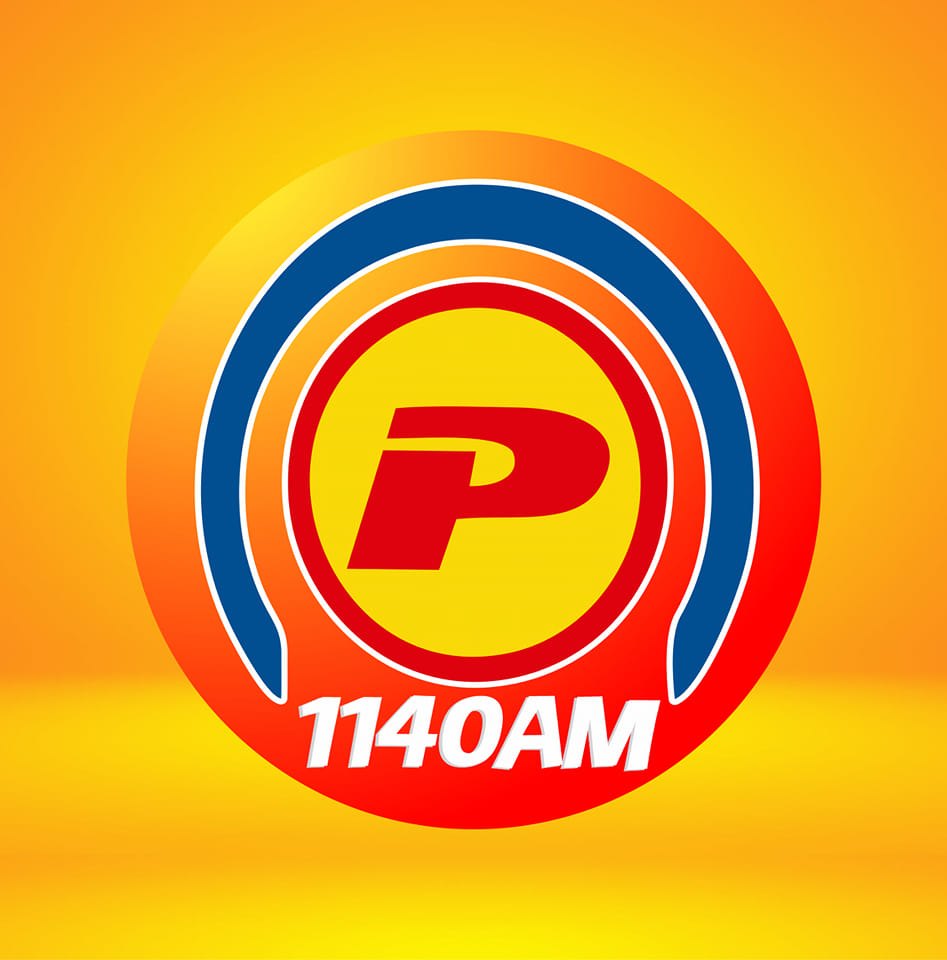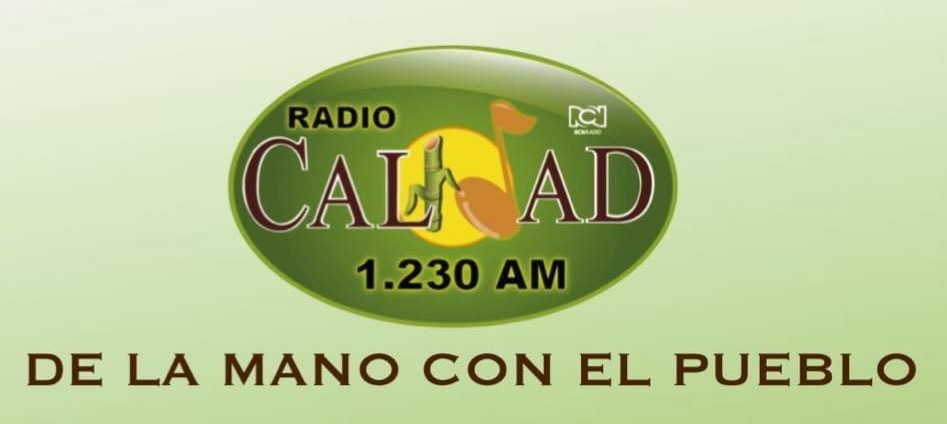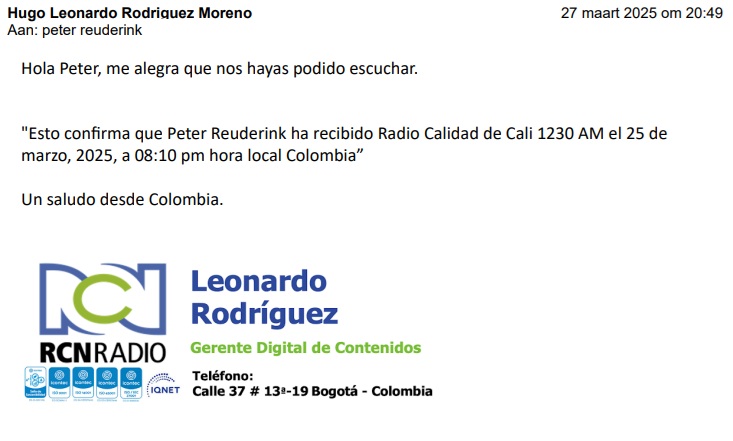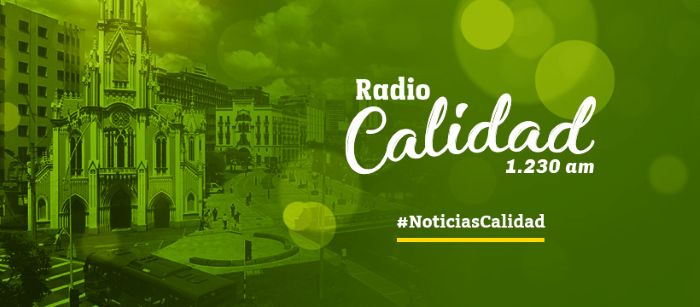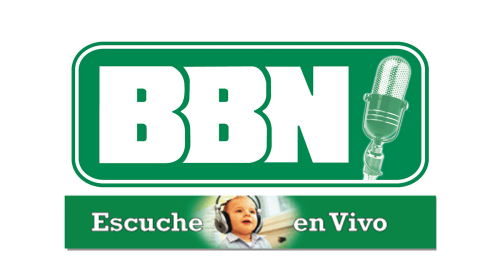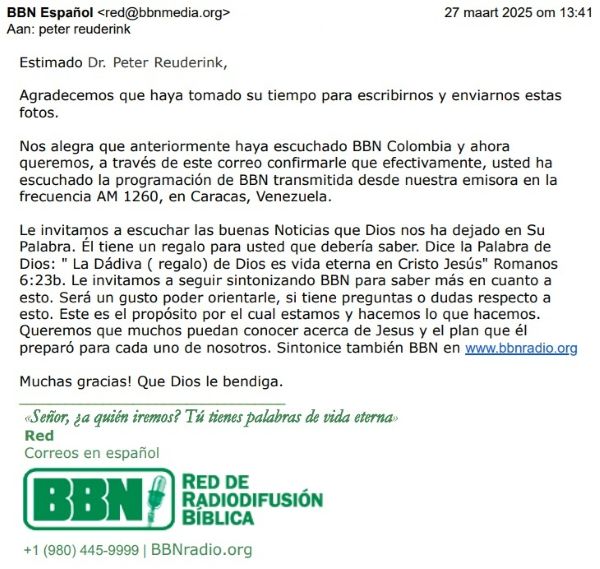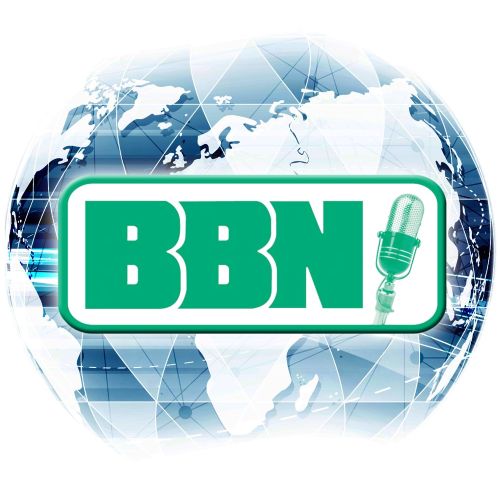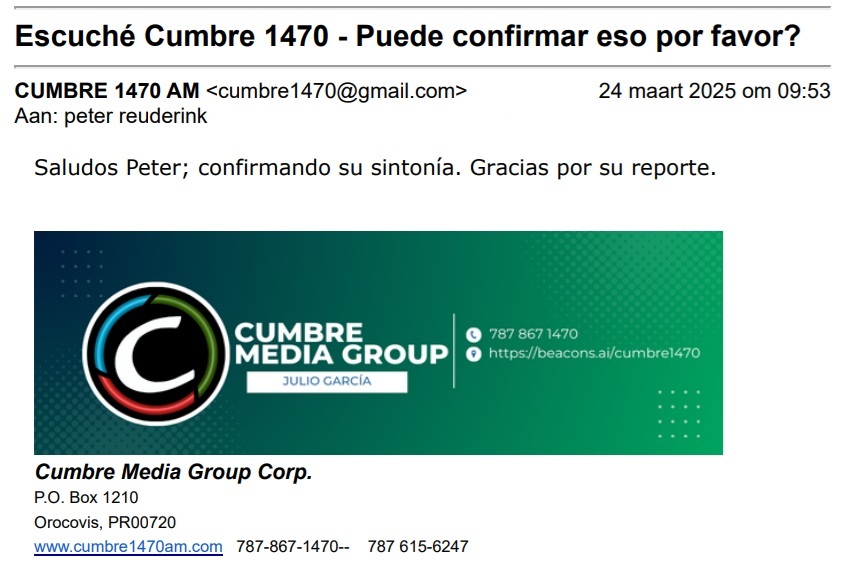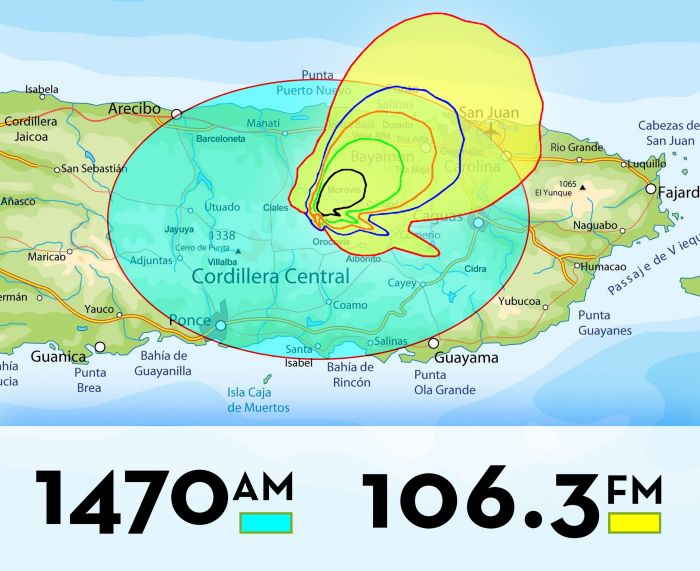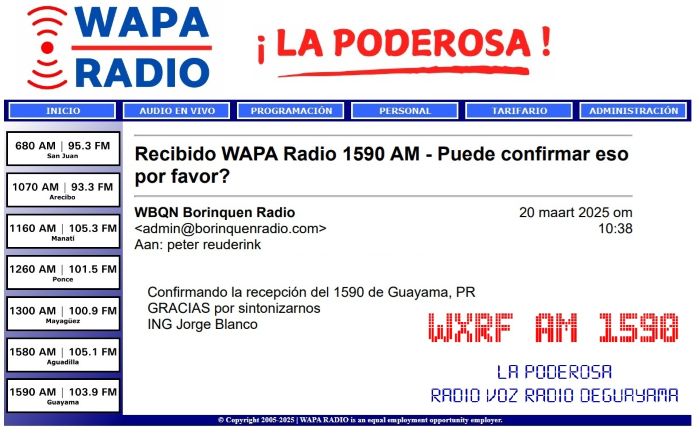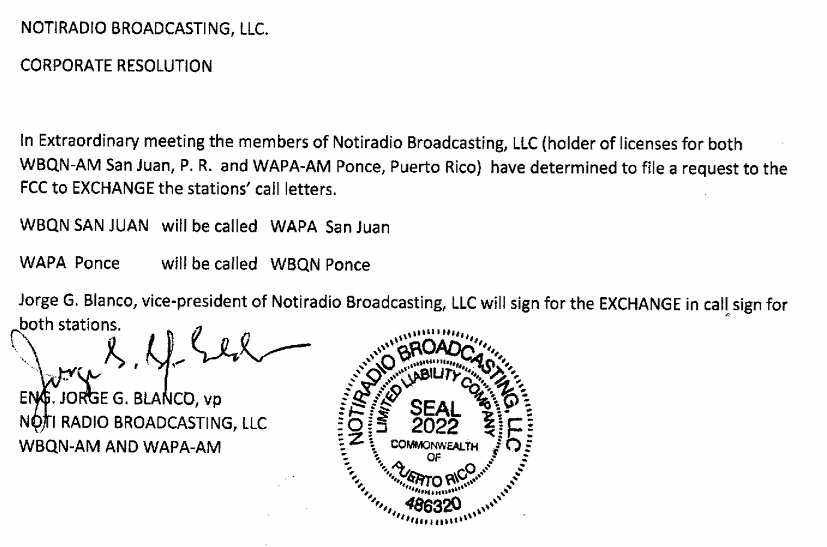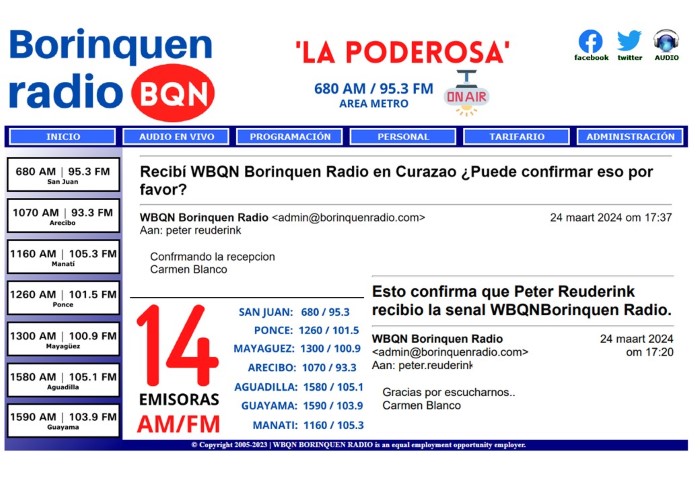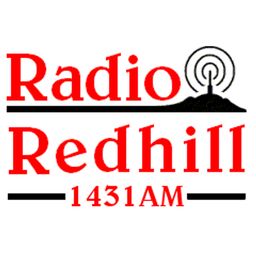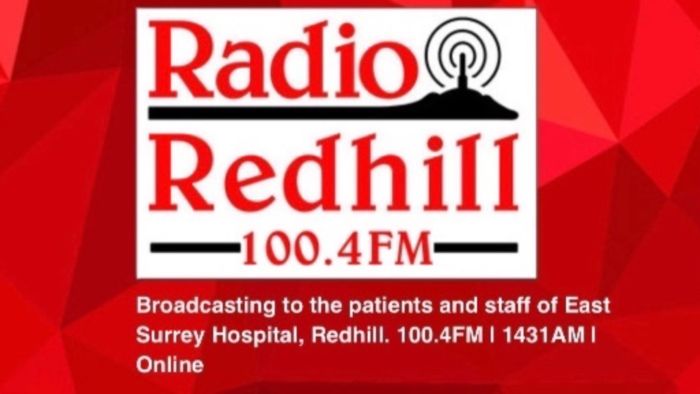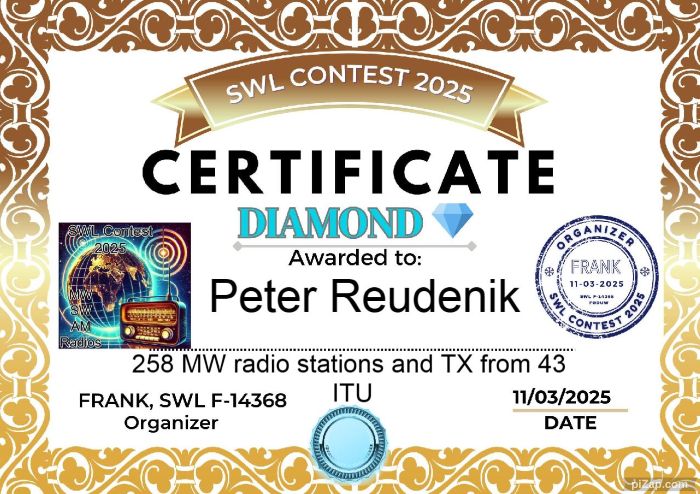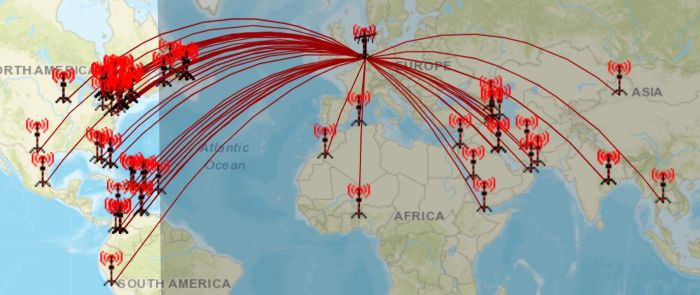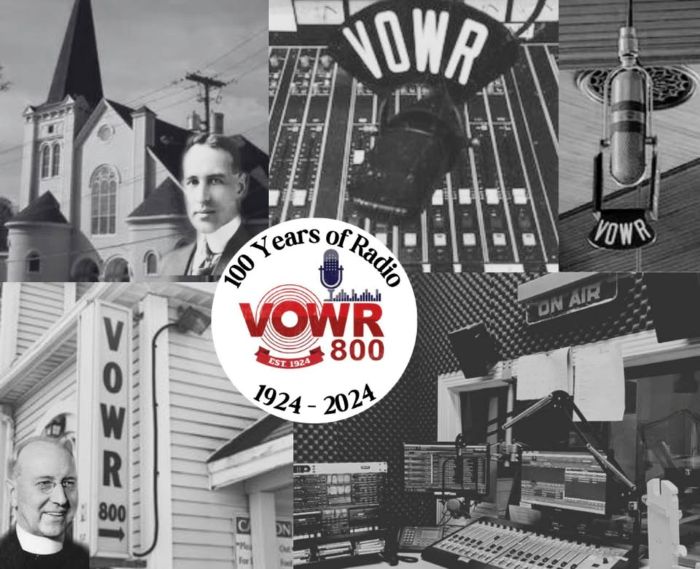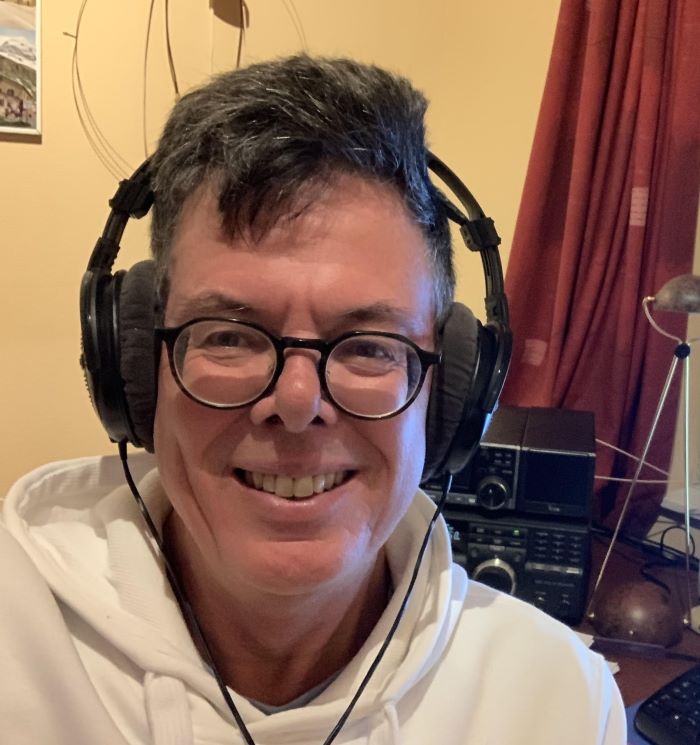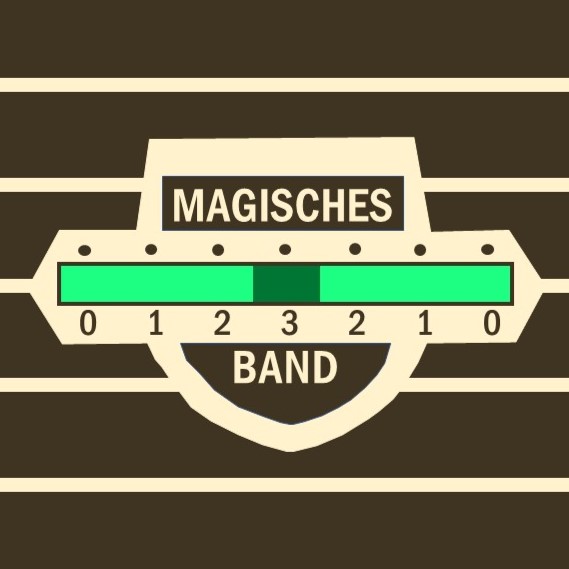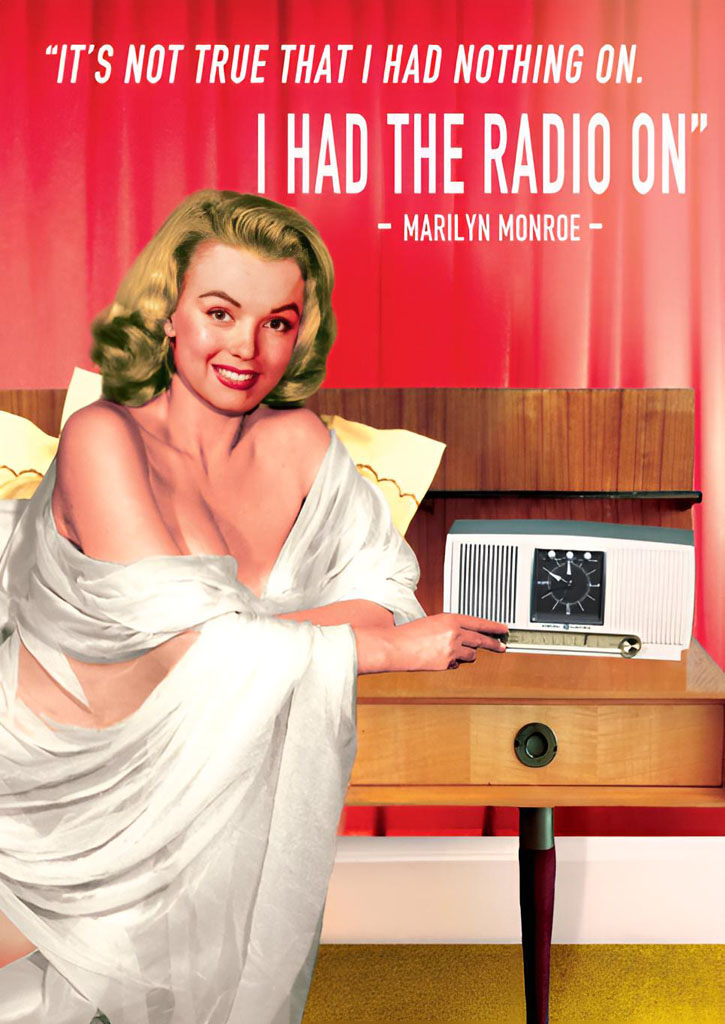Radio Redhill is a Hospital Radio station broadcasting on 1431 kHz with 1 Watt only from East Surrey Hospital in Redhill, south of London, United Kingdom. That’s a distance of 360 kms.
I did hear Radio Redhill in the first two months of the year almost on a daily basis, around 04:00 – 06:00 h UTC. But never really strong, just not above the realitively high noise level at my location. Sometimes I could pick up “Redhill”. In the end I decided to wrote down two song titles I recognized, made a MP3 recording, and sent my report to: studio(at)radioredhill.co.uk. Three days later, Ian, station engineer sent me a kind email to confirm my report:
Hello Peter.
Thank you for your reception report.
I can confirm the music you identified was played at that time:
March 14th
04:42 The Carpenters – Goodbye to Love
…..
04:02 Buddy Holly – Peggy Sue
We transmit with 1 watt of power so it is always interesting to receive reception reports from all over Europe. Sweden and Norway are the furthest we have had reports from.
Thank you for your email.
Ian
Station Engineer.
Radio Redhill started in 1974. My guess is that it was a typical “radio by wire” station that you have or had at many hospitals. In 2000 AM broadcasts started, and since 2022 the station is active on 100.4 MHz. You can learn more about the history of this hospital radio station on their website.
